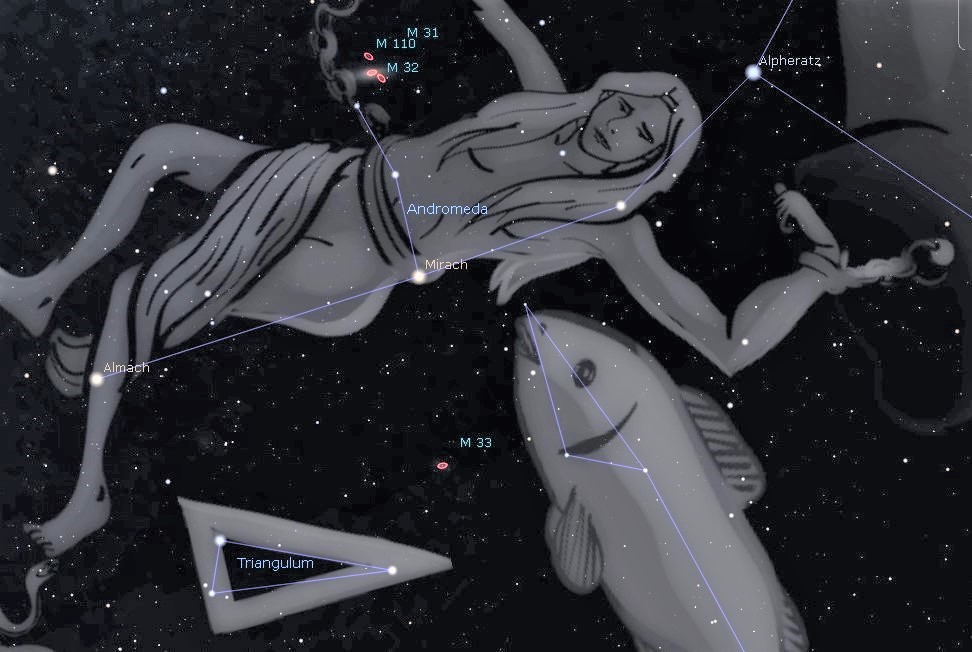This Week’s Sky at a Glance, 2020 September 5 – 12 ~by Curt Nason
Technically, any three stars in the sky will form some sort of a triangle, but there are those that stand out. Overhead in early evening is the best known celestial threesome, the isosceles Summer Triangle of Vega, Deneb and Altair. Straddling the Milky Way, each star is the brightest in their respective constellations of Lyra the Harp, Cygnus the Swan and Aquila the Eagle. An ancient tale of Eastern mythology depicted Vega and Altair as lovers separated by a river (the Milky Way). I look at them as an updated version of that tale, that of Running Bear and White Dove in the Johnny Preston hit written by the Big Bopper, J.P. Richardson. The Big Bopper would be a good name for a constellation.
With the Summer Triangle overhead, the constellation Triangulum the Triangle is low in the east below Andromeda. Known as a constellation for thousands of years, it has been said to represent, among other things, the Nile Delta and the island of Sicily. If you have a dark sky, use binoculars to look about a third of the way, and a tad to the right, between the tip of Triangulum and the orange star Mirach in Andromeda above to see the face-on spiral galaxy M33.
Now that summer is fading, and if you can’t wait for winter, just look to the east in morning darkness for the Winter Triangle. Orange Betelgeuse in Orion’s armpit joins with Orion’s companion Dog Stars of Sirius and Procyon to form an equilateral triangle. All three stars make the top ten in brightness, or close to it if Betelgeuse hasn’t fully recovered from last winter’s dimming event.
This Week in the Solar System
Saturday’s sunrise in Moncton is at 6:45 am and sunset will occur at 7:49 pm, giving 13 hours, 4 minutes of daylight (6:51 am and 7:53 pm in Saint John). Next Saturday the Sun will rise at 6:54 am and set at 7:35 pm, giving 12 hours, 41 minutes of daylight (6:59 am and 7:39 pm in Saint John).
The Moon will be rising just to the right of Mars this Saturday evening and it is at third quarter on Thursday. Mars is stationary on Wednesday, beginning two months of retrograde motion against the stars; while Jupiter resumes its prograde motion next Saturday and spends all of autumn closing the gap to Saturn. Telescope users can catch Jupiter’s Great Red Spot around 9 pm Tuesday and 10:30 pm on Thursday. Mercury is difficult to spot low in the west this week, setting 35 minutes after the Sun. Venus is up bright and early in the morning sky, rising at 3 am, and Neptune is at opposition on Friday.
With astronomy meetings and outreach activities on hold, you can watch the local Sunday Night Astronomy Show at 8 pm and view archived shows.
Questions? Contact Curt Nason.

